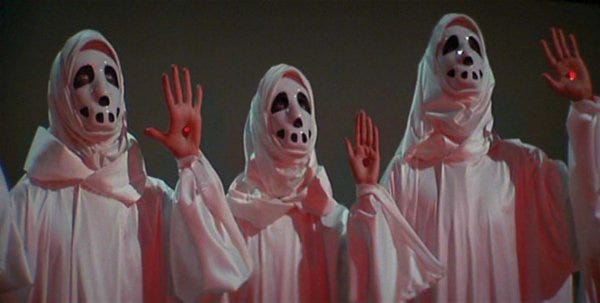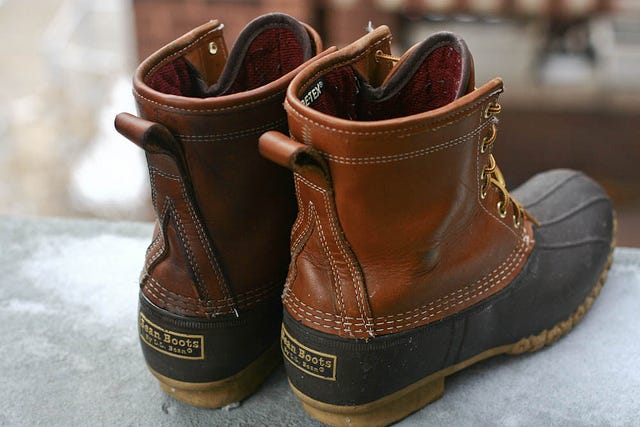So What, Who Cares (vol 2, issue 15) What you get today is the monthly wrap-up

Hello! We are about 48 hours away from finishing out the first month of 2015. I have to be honest: It feels like 2014: The Sequel so far. But we still have eleven months to turn it around.
I may turn it around with chickens -- according to at least one correspondent, they are a great solution to the issue of household food waste, as in, they eat your kids' leftovers and then you can eat the eggs the well-fed chickens produce. Or you can eat the chickens who are not producing eggs. (But then you're back to having a food waste problem, so there may be some glitches in the poultry hack to be worked out ...)
How's your 2015 treating you thus far? Tell me via Twitter or email.
*
So! As you all know, I wrap up each month's So What, Who Cares newsletters with one handy summary of the month that was.
Not only is this email perfect for providing you with fodder to fuel your personal legend as the most interesting conversationalist in the room, it's also a good one to pass on to people who are not yet subscribed to So What, Who Cares. You can send it on all, "This is the secret to my riveting repartee," and bask in the gratitude of a) the recipients of your largesse, and b) me, who would like more people to subscribe.
ANYWAY. Here's what I wrote about in January 2015:
*
IN HEALTH NEWS ...
Mason jar salads might be the meal that revives fast-food sales, since they solve a great many problems with packaging and distributing fresh produce. The only lingering concern: salads are still labor intensive and can't easily be prepared ahead of time. (vol 2, issue 1) However, given the news that fast food may actually hinder children's intellectual performance (vol 2, issue 3), chains will probably have to start launching a "No, really, we're healthy!" campaign, and salads-in-jars aren't the worst thing they could do.
An advisory panel to the Agriculture and Health and Human Services Departments is looking at federal nutrition guidelines and thinking about including environmental impact as one of the guidelines people should consider when choosing their food (vol 2, issue 7). Another aspect of the food-environment nexus: Seattle's move to begin fining people who do not sort their compostable food waste. It's their small effort to reduce the 35 million tons of U.S. waste comprised of the food people throw away before/during/after its time. (vol 2, issue 13).
Scientific research continues to pound home the point that systematic sleep deprivation is horrible for you, an

d maybe we should take electronic devices out of children's bedrooms so they can get a decent night's sleep as well (vol 2, issue 2). We should also take electronic devices out of our own bedrooms, because it's better for our own sleep and for our relations with the person who may happen to share our bedrooms (vol 2, issue 4).
On the mental health front: We can get people to be less selfish if we get them to frame their choices as a narrative biography their admiring descendants are recounting (vol 2, issue 8). The downside is that framing responsible choices as self-serving ones has a long-term effect of making people even more self interested and less likely to do something simply because it's the right thing to do. Also, listicles are a remarkably efficient way to pour information into your brain (vol 2, issue 9).
We have reached peak Crossfit and it's time to get another fitness trend (vol 2, issue 1).
India continues to find creative social-engineering solutions to its persistent problem of outdoor elimination: It's going to launch a potty police. (vol 2, issue 5)
And finally, 78% of U.S. senior citizens are mixing their drugs and alcohol. Which -- whatever! Respect your elders! Let them have their thrills, nanny state ... but there are a lot of senior drivers, with 84% of all Americans aged 65 and older licensed to drive, 68% of motorists over age 85 on the road 5 days a week -- and more than 75% of senior drivers are on one or more medications (vol 2, issue 14).
*
IN "THE WIDENING ECONOMIC GAP IS A STORY THAT'S NOT GOING AWAY" NEWS ...
A look at marriage rates by occupation shows that over the past fifty years, blue collar occupations have become increasingly correlated with high rates of divorce (vol 2, issue 3), which is just another data set pointing to marriage as an increasing indicator of socioeconomic status in America. Another indicator that different socioeconomic strata in America leading increasingly disparate lives: the leisure-time gap. Research shows that working-class adults have more leisure time than white-collar men and women, which is either a reflection of "down time" acquiring a distinctly downmarket connotation or an indication that white-collar workers are a) terrified of losing their jobs and/or b) trying to fit in work around the chunks of time they're parenting (vol 2, issue 11).

I also looked at the location conundrum facing young adults: The places where Millennials can afford to live are usually not the same places that are statistically the most likely to lead to economic and social mobility (vol 2, issue 6). So you can have the nice house with the yard or you can have the career that's likely to boost your earning power over time, but don't expect to have them in the same place.
Finally, I looked at the depressing news that more than half of the children enrolled in the U.S.'s public schools qualify for free or reduced-price school lunches while also noting that public school teachers are dealing with children who are statistically less likely to have had enriching activities at home prior to school, and more likely to be dealing with food insecurity and other stressors that cognitively impair learning (vol 2, issue 9).
*
IN "TECH NEWS I SUSPECT LOSES ME SUBSCRIBERS^ EVERY TIME I WRITE ABOUT TECH" NEWS ...
Telecoms have proven vulnerable to global warming (vol 2, issue 8), joining a long list of industries including, but not limited to: junk food makers (vol 1, issue 6); agriculture (vol 1, issue 9; vol 1, issue 21; vol 2, issue 7); the vacation and insurance industries (vol 1, issue 12); wine and chocolate (vol 1, issue 55); and the shipping industry (vol 1, issue 63).

The tech industry led all other sectors in job cuts in 2014, with the number of job cuts in the tech sector jumping 69% year over year from 2013 to 2014, mostly so bigger, older companies can streamline less lucrative divisions and reduce overhead to compete with younger, nimbler companies. Also, older companies are "deciding that it’s faster and cheaper to chuck people overboard and find new ones than it is to retrain them." (vol 2, issue 10)

One elderly stalwart of technology no company can shuck: email. A Pew Research survey found that 61% of employed Internet users cited email as "very important" to their job. (vol 2, issue 10)
The cloud storage market is awash in billions of dollars, mostly because investors are betting that Box.com or Dropbox will expand from "like your hard drive, only someone else owns it" to a new type of operating system that allows people to collaborate from anywhere, on any device (vol 2, issue 12). This is a big deal: we're at an inflection point for cloud storage and how people use it.
^ It's true: I've lost forty subscribers in the days after covering these topics. This is kneecapping my delusion that what we need more of is tech news that focuses less on breathless spec descriptions and more on "But why is this news?"
*
IN CONSUMER AND RETAIL NEWS ...

We looked at L.L. Bean's incredibly invested customers and the things they care enough to review on the site (vol 2, issue 1).
Businessweek decided that subscription box mania was out of control, a blog post that was valuable only in how it gave me a chance to recommend an infinitely superior Pacific Standard piece from May 2014 (vol 2, issue 5).
We found out that the Hollywood Reporter did an uncannily good job of predicting the red carpet trends for the Golden Globes, and that Pantone's it-color "marsala" may not be gaining a lot of traction among stylists right now (vol 2, issue 5).
Retailers have discovered an amazing secret of the consumer psychology: When you stop referring to women as "plus-sized," they want to buy your clothes. (vol 2, issue 10) They have also discovered that people really love to shop from catalogs -- to the tune of $76.5 billion in purchases annually -- so if you make the catalogs look and feel like high-end magazines, you keep those customers happy (vol 2, issue 12). And the last look into the consumer psyche discovered that when people are watching TV, they're less likely to shop online (vol 2, issue 14).
*
AND IN POP CULTURE ...
Things to watch: I went to the video-sync well a few times, first with the earworm ( "La jiggy dar dar doo") that ate the whole first week of the year for me (vol 2, issue 2) and then with Rowlf the dog "performing" Biz Markie's classic. (vol 2, issue 12) . I'd also be remiss if I did not include a mash-up of "Mama Said Knock You Out" and "Come on Eileen" (vol 2, issue 8). And I binge-watched Manhattan (vol 2, issue 13), then kvelled about the costumes on The Americans (vol 2, issue 14).
Recommended reads: Nancy Kress's novella Beggars in Spain (vol 2, issue 2); Teri Agins' Hijacking the Run

way (vol 2, issue 5); Mike Grell's The Longbow Hunters and Andy Diggle's Year One (vol 2, issue 6); Dan Barber's The Third Plate: Field Notes on the Future of Food (vol 2, issue 7), Marc Spitz's Twee: The Gentle Revolution on Music, Books, Television, Fashion and Film (vol 2, issue 7), Legs McNeil's Please Kill Me: The Uncensored Oral History of Punk; Jeff Chang's Can't Stop Won't Stop: A History of the Hip-Hop Generation; Mark Yarm's Everybody Loves Our Town: An Oral History of Grunge; Greg Prato's Grunge Is Dead: The Oral History of Seattle Rock Music; and Lisa's Chamberlain's Slackonomics: Generation X in the Age of Creative Destruction -- all in (vol 2, issue 7); Emily St. John Mandel's Station Eleven: A Novel, William Gibson's The Peripheral and John Varley's Slow Apocalypse (vol 2, issue 9); Ryan Browne's God Hates Astronauts (vol 2, issue 10); Great Pacific by Joe Harris and Martin Morazzo and The Massive by Brian Wood (vol 2, issue 11);
On the podcast front: I fell in love with Denzel Washington Is The Greatest Actor of All Time Period and now I want you all to listen to it too (vol 2, issue 4). And I was on The Incomparable's latest book club, Eat Pray Love Die Survive, the latest Comic Book Club, World Class Weirdo, and the first-ever Flash flashcast.
*
Did you miss an issue of So What, Who Cares? The archive is here. Are there typos? I apologize in advance.
As always, I welcome your feedback and suggestions -- you can reach me through Twitter or email. Please do not hesitate to let me know what you think about So What, Who Cares, or suggest links/topics/pop culture that rings your bell.
If you really like it, tell a friend to subscribe.

